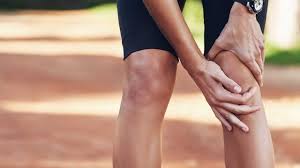
Runner’s Knee: What is it? How to get rid of it?
Welcome back! In this article, we will talk about the infamous Runner’s Knee. What is it actually about? It sounds like every runner should have one or two of these. Unfortunately, it is not something that anyone should aspire to have.
Have you ever experienced pain under and around the knee cap that gets worse after running or when climbing up or downstairs? It feels like a dull ache that you cannot really pinpoint and the best way to show where it hurts is to cradle the whole knee cap. Well that my fellow runner is Runner’s Knee, technically known as Patellofemoral Pain Syndrome (PFPS). This happens when the cartilage lining the underside of the knee cap (patella) becomes irritated as it glides in its groove on the thigh bone (femur). Well, one might say that the whole motion of these two bones is not properly synched and this causes the patellar cartilage and supporting soft tissue to become inflamed and painful.
So now that we know what it feels like and where it happens the next big question is: Why does it happen?
This is a huge debate and most experts cannot come to a consensus as to why and how it happens. The latest research indicates that the culprit might be hiding quietly further up the leg. Studies have shown that what your foot is doing and the function of your quadriceps, (that nice chunky muscle in which your patella is embedded), do not really influence your chances of developing PFPS although quadriceps strengthening will play a role in the treatment of it.
Biomechanical models of human running have shown that the crux of the problem lies in the hips. The human body is the marvelous machine that has evolved over millennia to run long distances needs every component to be working in synchrony. When the hip musculature is not strong enough or is not firing timely to support the action of the femur as it moves forward and back during the running cycle, the femur is allowed to rotate excessively under the patella. This tends to occur more than it would in a pain-free individual, thus producing this repetitive strain that causes inflammation of the structures that are taking the brunt of this uncontrolled movement.
The muscles involved are the hip abductors or the muscles that move your leg out when the leg is off the ground, and the same muscles help to stabilize your pelvis when the leg is on the ground propelling the body forward. One can easily palpate them when putting a hand slightly further forward than the back pocket of your trousers. Another muscle group that is involved is the external rotators of the hip. These control the rotation of the femur during the running cycle. Both these muscle groups have been shown to bear most of the blame when it comes to PFPS.
What can be done?
As discussed, load modification is paramount when dealing with an injury. The approach where one decides to run through the pain without properly listening to what the body is trying to tell him/her is detrimental to the whole recovery process. The earlier you deal with it, the faster the recovery. The best option is to get a proper diagnosis and then visit a physiotherapist who will guide you through the process of load management, customized strength training, and proper running biomechanics. If you also have a running coach, get the physio and the coach talking to get the best of both worlds!!
A brief overview of what the treatment would involve:
- Strengthening for hip and quadriceps musculature.
- Single leg balance work to help activate hip stabilizers, namely the external rotators.
- Correct flexibility, as tight calves, and quadriceps have been shown to make things worse. A foam roller might also help to massage tight musculature.
- Correct running biomechanics – Decreasing your stride length can help to lower the pressure on your knees. Aim for 170-180 steps per minute.
When this fails, more aggressive treatment would involve soft tissue release, acupuncture, and electrotherapeutic modalities.
There is a huge ongoing debate as to whether the foot is involved and if the use of orthotics to treat PFPS is recommended or not. In my opinion, the research does not support the use of orthotics, but some runners report that they found that custom orthotics have helped them. Placebo? Whatever helps you increase your mileage without aggravating your injury and breaking the bank is a plus.
Until next time, keep running, stay injury-free and most importantly, enjoy it!
Simon Cilia